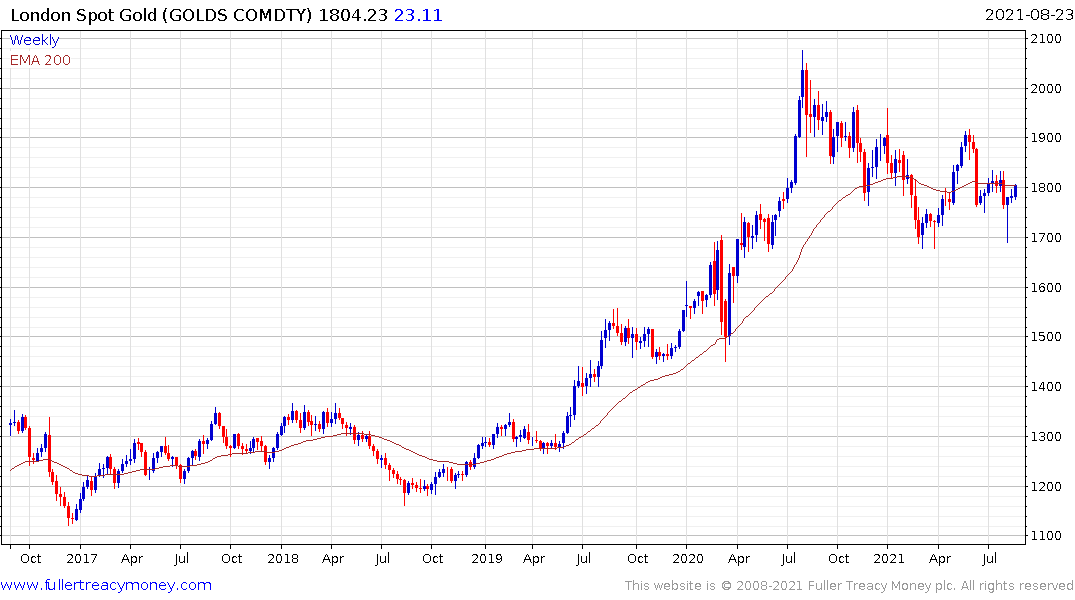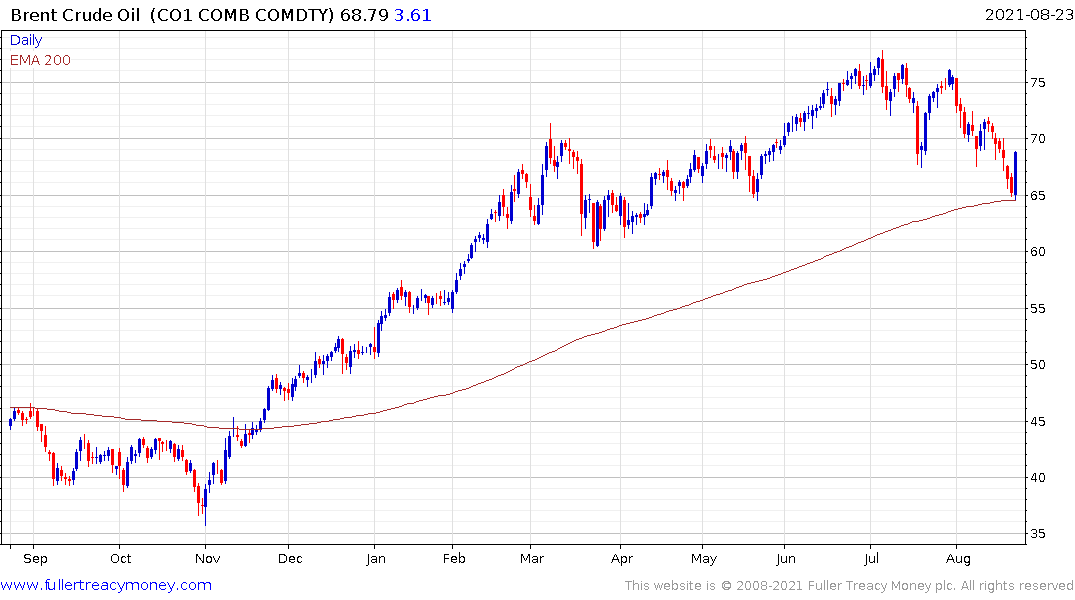Powell's Jackson Hole Gamble Runs Risk of Backfiring
This article from Bloomberg may be of interest to subscribers. Here is a section:
In the end, it will come down to what Powell considers the bigger longer-term risk for the U.S.: Become trapped in a disinflationary spiral like that experienced by Japan as the forces of technological advances and globalization continue to press down on prices, or enter an inflationary zone of escalating cost pressures akin to what the U.S. suffered a half century ago.
Right now, he’s betting that the former is the bigger long-run danger, and holding off from tightening credit.
“The new framework is not so much about what kind of monetary policy you would expect right now, but what you might expect over the next year or perhaps longer as this recovery continues,” Wendy Edelberg, director of The Hamilton Project at the Brookings Institution, says. “They have made a pretty convincing argument they are going to keep monetary policy accommodative for longer than they would have under a different policy rule.”
But the path ahead will be far from easy as the Fed seeks to softly land the economy in the neighborhood of on-target inflation and maximum employment.
“It’s going to very difficult,” says Blinder, who was at the Fed when it achieved what many economists consider its only perfect landing for the economy, in the mid 1990s. “If they can achieve that, they deserve more than a pat on the back.”
The US economic expansion is slowing down. The end of stimulus coupled with the rising perception of risk from the delta variant are conspiring to restrict economic activity. That’s not the kind of environment a central bank is likely to tighten into. In fact, these conditions are only likely to confirm the Fed’s conclusion that inflationary pressures are going to be transitory.
Of course, the catch-22 is that inflation is only likely to be transitory if the Fed begins to remove monetary accommodation. Does the Fed want inflation to be transitory? That’s the big question.
Against a political backdrop where increased spending is being proposed by both parties, some sensitivity to borrowing costs has to be part of any calculation. Fiscal stimulus is required to ensure greater “equality” and to avoid deflationary forces. That’s only possible if we remain in a negative real interest rate environment. Therefore, tapering and interest rate increases cannot occur until growth is outpacing inflation by a sustainable margin. We are nowhere near a point where that conclusion can be reached with confidence, so it would be reckless to taper assistance quickly.

Gold continues to rebound and is back testing the $1800 area. It has now completely unwound the two-day plunge a week ago and is testing the region of the 200-day MA.
I remain of the view that trading over the last year is emblematic of the beginning of the 2nd psychological perception stage of the bull market, which will culminate in Acceptance of the bull market hypothesis.
Right now, there is a lot of doubt in the minds of investors about the outlook for gold. That’s understandable given the volatility we have experienced. However, the most important point is that despite volatility the price has continued to hold the higher price environment. That’s what needs to happen so investors are psychologically willing to accept that a decline back into the base formation is not going to happen.

Brent Crude oil posted an upside key day reversal today from the region of the trend mean. That suggests a low of at least near-term, and potentially medium-term, significance.


